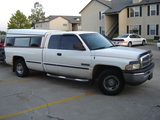http://mopar.mopar1973man.com/cummins/2ndgen24v/valve-adj/valve-adj.htm just got done running the valves.#6int and exhaust valves were out alittle.got them all adjusted in time before winter time gets here.:thumbup2:fired it up and the little tick tick was gone:thumbup2:
- Replies 25
- Views 5.1k
- Created
- Last Reply
Top Posters In This Topic
-
guesswho512 6 posts
-
ISX 5 posts
-
Mopar1973Man 3 posts
-
silverram323 3 posts





